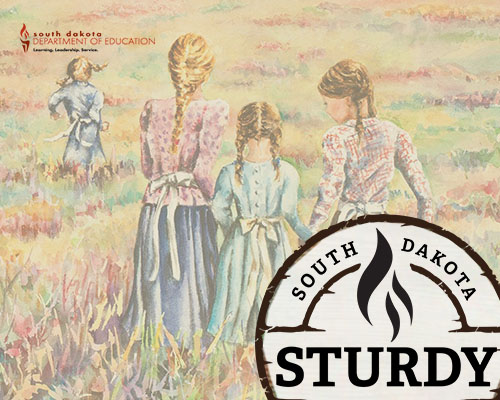DOE announces curriculum to develop children’s resiliency
The South Dakota Department of Education (DOE) has developed a program of study for elementary and middle school students that uses the experiences of prominent South Dakota figures to help children develop the life skills necessary to thrive in today’s world. “South Dakota Sturdy” is a collection of lessons designed to be used as a part of school counseling programming, as well as a complement to English language arts and social studies curricula.
The lessons are available online, free to all counselors and teachers to use. The lessons are geared for students in grades 4-6, but they can be modified to use with older or younger students as well.
“South Dakota Sturdy is a set of 10 lesson plans that feature a person, animal, or landmark that students can learn about, and along the way, they can take with them a lesson about traits they can develop so that they can succeed in their lives,” said Secretary of Education Joe Graves.
The traits include perseverance through difficulty, courage, focus, and others. The concept of South Dakota Sturdy was developed to help counselors and teachers inspire students to work hard to achieve their goals.

“Growing up is tougher than it looks. Arguably, it’s even more difficult today with societal changes coming at young people faster than ever before. It goes without saying that our students need this type of instruction,” said Graves.
“We have these examples of the skills it takes to be a successful adult right here in South Dakota, and we wanted to use them as a lodestar for children to look to for guidance,” said Graves. “Teddy Roosevelt struggled to overcome major obstacles when he was a child and an adult. Billy Mills had a gift for running, but few resources beyond that. Laura Ingalls Wilder was constantly challenged by nature itself as she and her family strove to make a life for themselves as pioneers.”
Each of the lessons teaches a life lesson. The lessons attempt to make children more “sturdy” through relatable South Dakota examples. In doing so, the lessons also have cross-curricular connections; each of those are reflected in the lesson with specific references to school counselor competencies and content standards from social studies, English language arts (ELA), and science.

For example, “Lesson 3: Crazy Horse (Tĥaŝúnke Witkó): The Warrior Servant” addresses three standards from South Dakota Mindsets & Behaviors for Student Success. It also satisfies two ELA standards, three social studies standards, and nine of the Oceti Sakowin Essential Understandings & Standards (OSEUs). This lesson about the famed Oglala warrior goes into detail about Tĥaŝúnke Witkó’s life and qualities, and how those qualities made him a leader to be emulated. It also discusses engagement between U.S. government forces and Native Americans in the west during and after the Civil War (5.SS.9.J) Students who read and engage with the lesson will meet the ELA standards 4.RF.4a and 5.F.4a. Discussion of Tĥaŝúnke Witkó’s life will also lead students to identify ways that the Oceti Sakowin values provide resiliency in keeping the Oceti Sakowin way of life (OSEU Standard 7.3).
Each lesson plan includes an anticipatory set, an objective and purpose, resources to be accessed, modeling, guided practice, independent practice, and student-led closure. The lessons also include a list of South Dakota content standards that are addressed by the lesson. Each lesson comes with a hands-on activity that students can engage with following the lesson.
Elementary and middle school teachers and counselors are encouraged to visit doe.sd.gov/sdSturdy to explore the lesson plans, student reading excerpts, and supplemental lessons.
